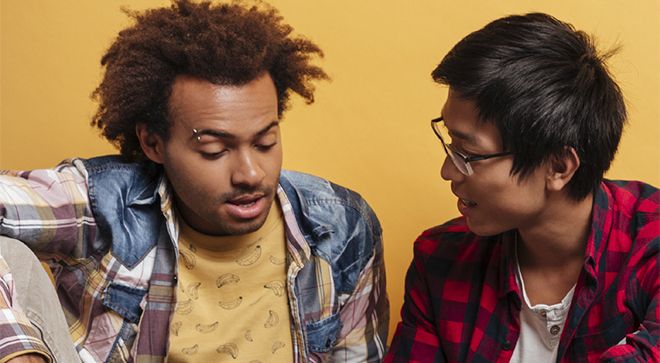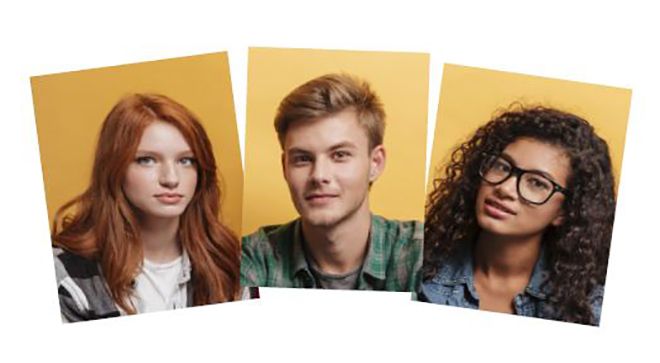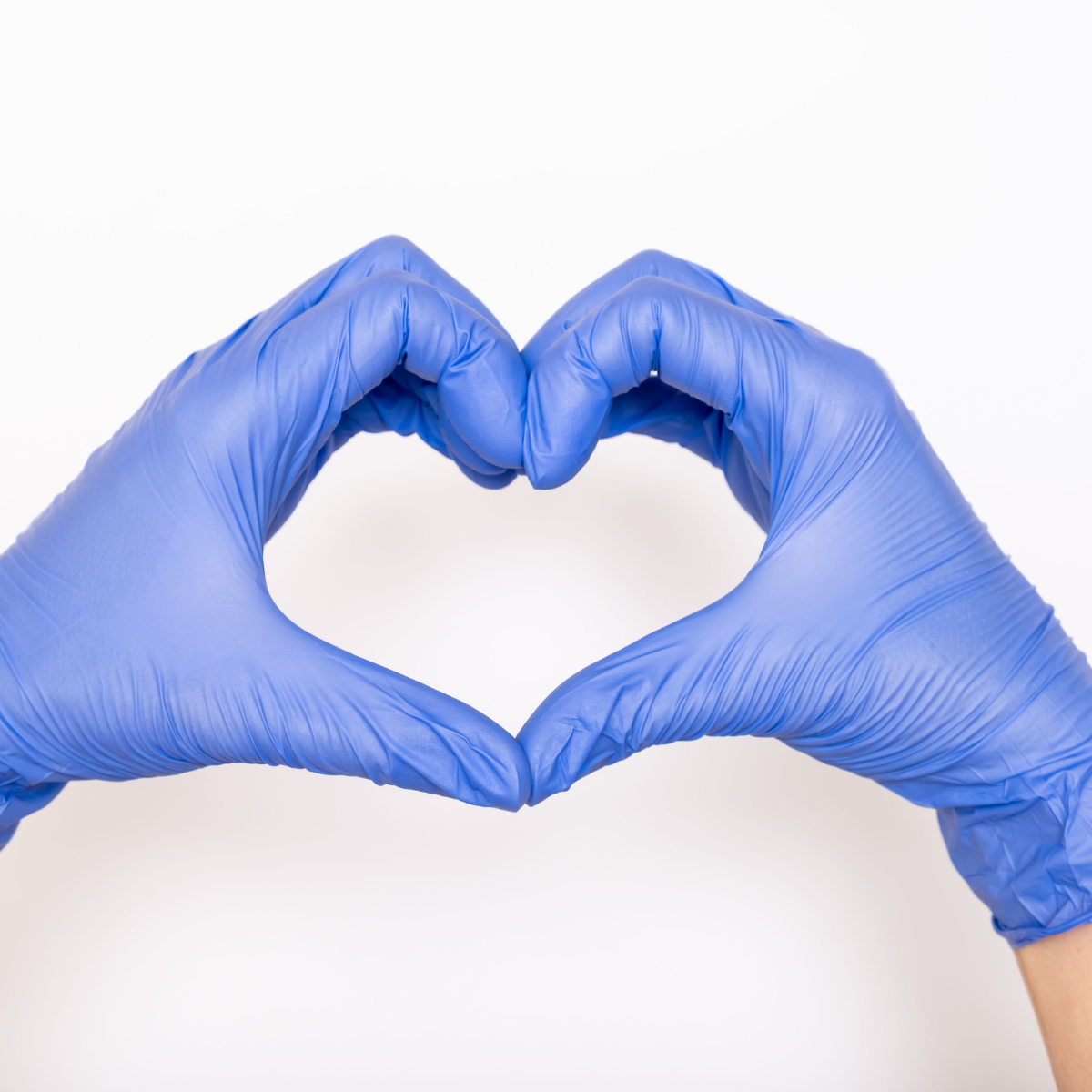Publication
Article
Heal
Young and (Cancer) Free
Author(s):
Although they no longer face the disease, adolescent and young adult survivors live with hardships.
In fall 1989, Joyce Reinecke, J.D., was traveling to Washington, D.C., for her Seattle-based law firm when stomach pain sent her to the emergency room. She was admitted to the hospital and learned a few days later that she had leiomyosarcoma, a rare cancer that affects smooth muscle tissue, most commonly in the belly.
She was 29 years old, which categorized her as somewhere between pediatric and adult patients with cancer, now known as Adolescents and Young Adults (AYAs). AYA patients are identified as those who receive cancer diagnoses between the ages 15 and 39, according to the National Cancer Institute (NCI).
Ten days after extensive surgery to remove four tumors, Reinecke was preparing to leave the hospital to go to New York for consultations with medical oncologists about her next phase of treatment — chemotherapy — when a member of her medical team stopped by.
“A fellow who had been on my case was close to my age and had been super involved,” she recalls. “He came by when I was getting ready to leave and said, ‘You know if you go forward with this chemotherapy plan, there is a good chance you may not be able to have children.’”
Reeling from shock, Reinecke replied, “No, I didn’t know that.” No one had mentioned it to her despite visits from many health care professionals, including a psychologist. Time was critical because fertility had to be addressed before she began any additional treatment.
“He was not an endocrinologist or a reproductive specialist, and he didn’t have a lot of information,” she says. “He just wanted to make sure I was on notice. I felt like, ‘Wow, this is crazy.’”
Reinecke and her husband, John, went into overdrive. Armed with research from the fellow, they talked with fertility experts in New York, where the most advanced procedures were available. “We had just moved from New York to Seattle and had no support system there, and my family was in New York,” Reinecke says, adding that the state also had some of the top sarcoma experts.
The couple decided to do in vitro fertilization, a new procedure at the time that was tied to her cycle. She had 22 eggs removed and fertilized. The embryos were frozen with the hope, Reinecke says, that she would be able to carry a pregnancy in the future. But as the weeks passed she saw that physically she had an extensive healing time. “We decided to move ahead with a way that would make us parents more quickly,” she says. They found a surrogate in California, and a year later were the parents of twin girls.
By interacting with other AYAs, patients will become aware of the issues for which they should be their own advocate.

By interacting with other AYAs, patients will become aware of the issues for which they should be their own advocate.
Ultimately, Reinecke never received the expected news that her cancer had returned, so she never had to undergo chemotherapy. She also took on a new career as a leader in the fertility needs of AYAs, working for nonprofit organiza­tions such as Livestrong and Fertile Hope.
“It had such an impact on my life,” says Reinecke, now the executive director of the Alliance for Fertility Preservation, a position she has held since 2014. “In terms of everything that we had to do and go through and the money we had to pay — that really became something that bothered me about the cancer experience.”
The Reineckes paid $9,000 for the embryo creation, which did not include the cost of storage and surrogate implantation. Today’s costs can vary from $10,000 to $25,000, depending on several factors, she says. And most insurance carriers do not cover any of the process.
AYAS NEED MORE RESEARCH
Each year in the United States, around 70,000 AYAs receive a diagnosis of cancer, according to the NCI. Historically, the group has been understudied and underserved.
In addition to dealing with fertility concerns, these patients face unique challenges regarding education, finances, careers, relationships, and physical and mental health. The Adolescent and Young Adult Health Outcomes and Patient Experiences (AYA HOPE) study was created by the NCI and the Lance Armstrong Foundation, now Livestrong, to help increase under­standing of post-treatment issues of the AYA population and ways to offer them support and follow-up. Several cancer centers across the country are part of the study. Researchers found that AYAs have low awareness of clinical trials and cancer’s impact in areas such as finances and fertility.
The multicenter Childhood Cancer Survivor Study includes more than 20,000 childhood cancer survivors and 4,000 siblings. It has shown that survivors of childhood cancer are significantly more likely to report poor health as they age. Researchers also identified an increased risk of death beyond age 40. By 50, the risk of disabling, life-threat­ening or fatal health conditions was 53.6 percent compared with 19.8 percent among siblings in the control group.
Clinicians caring for AYAs are seeing neurocognitive dysfunction, cardiopulmonary toxicity, endocrinopathy and second cancers. The frequency and severity of many of the late effects have been related to gender, age at diagnosis and the cumulative amount of treatment, including radiation and chemotherapy.
STUCK IN THE MIDDLE
Diana DeVoe will never forget when doctors told her that her hand would need to be removed because her cancer was so advanced. She was 18 years old and had just finished her first semester at The Ohio State University. She had noticed a knot between the first and second fingers of her left hand but waited until Christmas break to have it examined. DeVoe received a diagnosis of alveolar rhabdomyosarcoma, a subtype of soft tissue tumors that most commonly occurs in large muscles of the trunk, arms and legs.
At the time doctors were ready to discuss the course of treatment, DeVoe’s parents had left her hospital room momentarily. “Because the doctors considered me an adult, they didn’t wait for my parents to return,” DeVoe says. In addition to telling her that her hand would need to be removed, they explained that she would be on a regimen of chemotherapy for more than a year with very strong drugs that would make her very sick. She recalls feeling alone and that she did not belong there.
DeVoe’s feelings about how she received the informa­tion point to one of the challenges faced by both the patient and the medical community when it comes to treating AYAs, according to Casey Walsh, Ph.D., M.S.W, a licensed clinical social worker and senior research fellow at the University of Washington who has been involved with AYAs for more than 20 years.
In DeVoe’s case, her father refused to let doctors remove her hand until he sought other opinions. “Parents are often involved as the patient’s advocates, so if a patient is treated in the pediatric center, the medical team is accustomed to parent involvement versus if the patient is treated in the adult facilities,” Walsh says. “A lot of times patients fall in between both settings.”
Chronic psychological and cognitive impairments that slow post-treatment growth and affect quality of life are associated with AYA patients. It took DeVoe 20 years to stop telling people that her hand deformity was the result of an auto accident. She also suffered from depression and neuropathy (weakness, numbness and pain, usually in the hands and feet), as well as financial, educational and insurance challenges.
Historically, AYAs have been understudied and underserved. In addition to dealing with fertility concerns, these patients face unique challenges regarding education, finances, careers, relationships, and physical and mental health.

Historically, AYAs have been understudied and underserved. In addition to dealing with fertility concerns, these patients face unique challenges regarding education, finances, careers, relationships, and physical and mental health.
DeVoe underwent treatment for more than a year with no interaction from her medical team regarding help to overcome her depression and loss of self-esteem. She also doesn’t recall any discussions about late effects or follow-up care, except that the chemotherapy drug she took would end her fertility and could cause neuropathy, which began about 15 years after her treatment ended.
None of the doctors DeVoe saw could determine a treatment for the pain. Advocating for herself, she found a doctor at a local medical school who specialized in cancer late effects but had little to offer. DeVoe finally had a spinal stimulator inserted to help ease her neuropathy.
At the time, DeVoe was employed by a national hotel chain but lost 90 days of work while she sought help. The loss of time resulted in an ongoing insurance battle, which led to DeVoe losing her job and her insurance. Today she is a nanny.
FINDING SOLUTIONS
In recognizing the needs of the AYA community, many cancer centers have created special programming, such as space designed specifically with a common area that encourages patients to get out of their rooms and meet others around their age. For example, the University of Texas MD Anderson Cancer Center in Houston offers a program in psychosocial and supportive care that includes educational and vocational assessments; counseling around self-esteem, body image, emotions and health behaviors; and assistance in pursuing fertility options.
Brandon Hayes-Lattin, M.D., created the Oregon Health and Science University Knight Cancer Institute’s AYA oncology program in Portland, for which he serves as director. He brings personal insight to the program as a testicular cancer survivor who received his diagnosis at 28 while he was a medical resident. “The major elements are everything from getting an accurate diagnosis (to) finding a care team who is expert in what are often rare cancers,” Hayes-Lattin says.
In addition to providing medical care and clinical trial opportunities, staff members are on hand to offer informa­tion on financial, sexual and behavioral health, as well as rehabilitation and even a writing workshop. Patients are also informed about nonprofit organizations like the Samfund (thesamfund.org), which helps AYAs financially. Stupid Cancer (stupidcancer.org) is another organization that solely works to help AYAs.
By interacting with other AYAs, Hayes-Lattin says, patients will become aware of the issues for which they should be their own advocate. “What hit me was my own personal aspects of AYA cancer,” says Hayes-Lattin, who was married with a 2-year-old and another child on the way when he received his diagnosis, “things like health and life insurance, and the financial aspects of dealing with cancer as a young adult with a family.”
Since then, Hayes-Lattin has become active in state and national legislative issues, such as challenging insurance companies to pay for fertility preservation and the costs of clinical trials for AYAs. “On the national level, there was a successful effort that has to do with the financial toxicity for young adults, which is that having cancer had not previ­ously been a reason that a person would be eligible for the deferment of interest accrual on student loans,” he says.
At present, Hayes-Litton continues to advocate for other specific changes in insurance and medical procedures that complicate the lives of all AYAs.





